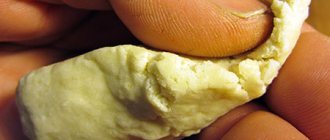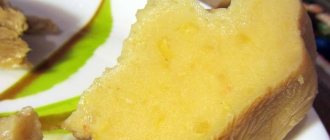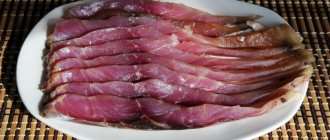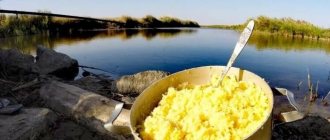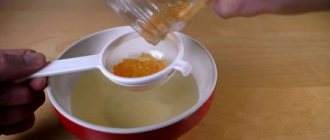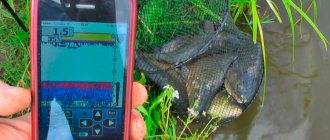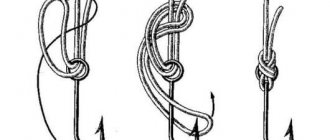Steamed wheat is one of the most productive baits for catching peaceful fish. Its advantage is that, firstly, the absolute majority of cyprinids living in our reservoirs bite on this bait. Secondly, and this is a huge plus, it is very easy to prepare. In addition, wheat holds well on the hook, thereby, unlike dough, cereals and other “soft” baits, significantly reducing the number of empty bites, especially in the current. In addition, by periodically throwing steamed wheat into the fishing area, it is possible to lure and hold fish for a long time, which is important for a good catch. And finally, this bait almost never catches small fish (although it can constantly fiddle with it) - only respectable specimens bite on it.
When, for whom and for what is wheat used?
Wheat is used as bait or groundbait for catching fish species such as:
- roach;
- ide;
- bream;
- carp;
- silver bream;
- crucian carp;
- White amur;
- all other types of carp.
Most of all, it is carp that bite on wheat, since this fish loves it very much.
You need to fish with wheat in bodies of water with a quiet current in warm seasons (spring, summer and early autumn) when the fish are actively feeding and grab almost everything. Wheat grains, which can be prepared in a variety of ways, usually show good results when fishing on lakes and ponds with fast currents, but the main problem is that in such reservoirs this bait does not stay on the hook for too long and needs to be changed often.
Cooking
The process of cooking wheat looks like this:
- Rinse three glasses of durum wheat and pour into a saucepan.
- Pour four glasses of water into it and put on fire.
- Bring to a boil and then add half a teaspoon of salt.
- Cook over very low heat for twenty minutes, stirring the wheat all the time with a spoon to prevent burning. If the grains burn, then the fish will not bite on them, since their burnt smell will scare away the catch.
- After the wheat is cooked, you can add flavoring in the form of honey or vanilla. You can also add another flavor, the main thing is not to overdo it and observe moderation in everything.
- Ultimately, the wheat needs to be removed from the heat and the pan should be wrapped in a blanket or towel to infuse it even more.
- After it has cooled, it can be used for its intended purpose.
Steaming
This cooking method is mainly used when there is very little time for preparation and you need to quickly make a catchy bait.
The steaming process looks like this:
- Rinse two glasses of wheat and remove debris.
- Pour the grains into a thermos.
- Fill them with boiling water to the top and close the thermos tightly. Leave to infuse for forty minutes.
- After this time, open the thermos and see if the nozzle is ready. It should swell well and increase in size. Its skin should crack in some places. If this does not happen, then you can leave the wheat to infuse for another ten minutes. The main thing is to prevent the wheat from completely boiling, since it will not be possible to make baits from such “flaccid” and crumbly grains.
- After the wheat is ready, it needs to be poured into a colander and rinsed under cold running water so that it does not stick together in the future. This should be done very quickly so that all the smell cannot evaporate and be washed off with water.
It is very important that the wheat be of durum varieties; this should be taken into account when purchasing it.
Cooking with steaming
The process looks like this:
- Pour six glasses of clean water into a large saucepan.
- Pour two and a half cups of wheat separately, rinse it with water, remove debris and husks.
- Pour the wheat into a pan of water and leave to steep for five hours so that it absorbs the water well. It is not advisable to leave it for a longer time, since the grains will become very soggy and will be unsuitable for use as bait.
- After this, you need to put the wheat on the fire in that container and water. Bring to a boil and add a little salt.
- Cook for ten minutes over low heat, stirring constantly with a spoon so that the grains do not burn.
- Then turn off the wheat and drain off the excess water.
- Pour the grains into a thermal bag or a regular thermos, pour a glass of water and leave for another three hours so that it further steams and is exactly what you need for use as an attachment.
It is important to know that wheat for this method should only be durum varieties. If it is of a soft variety, then after infusing in a thermos, the grains will completely boil and turn into porridge or a mass, which will certainly be unsuitable for attachment.
Also, during infusion in a thermos, you need to look into it from time to time to control the process. If you see that the wheat is well swollen and its onion is cracked, then the bait is already ready and should be pulled out.
What is better: pearl barley or wheat?
Pearl barley and wheat are two universal baits with which you can fish to your heart's content and, moreover, with some success. There is no big difference between them; they are all waterfowl and react equally to both grains. Even the cooking methods are similar.
You can take two types of grains for fishing at once, for greater confidence in success. Indeed, in different places and regions, fish give preference to only one known feeding method.
This bait is mainly used for a float rod; it is also possible to use a feeder. But with such fishing, the bait often gets knocked down, and it will be very difficult to hook it.
The first method is brewing in a thermos: pour pearl barley into a thermos and pour boiling water 1:3.
The cooking time will depend entirely on:
- how soft you need it;
- what kind of fish are you going to catch?
For roach hunting, the approximate cooking time is two and a half hours.
The second way is to cook: cook for about 40 minutes, stirring often so as not to burn.
These cereals are widely available and easy to prepare and do not require special skills or time.
Fermentation
Fermented wheat is prepared both for baits and for feeding fish. This is a fairly effective way to cook wheat, which always gives good results.
To ferment wheat you need to take:
- Four kilograms of wheat grains.
- Water at room temperature.
- Sugar - two tablespoons.
- Pots or plastic containers with tight-fitting lids.
- Wash the wheat and remove debris and husks.
- Boil it over low heat for half an hour.
- Add sugar, stir and remove from heat.
- After the wheat has completely cooled, pour it into a container and fill it with water so that its level is ten centimeters above the grains. This is necessary so that the wheat can swell well in the future.
- Close the container tightly with a lid and set aside in a dark place for four to five days.
- About halfway through this line, the wheat will begin to emit bubbles, ferment and foam, but you cannot open it earlier than necessary. It must withstand a certain time.
- It must be opened on time. The smell from the beans should be slightly alcoholic.
- If you want the wheat to be stronger and have a pronounced fermented smell, you can leave the wheat in the container for three weeks or a whole month. During this time, the grains will not deteriorate, but will only become even more attractive to fish.
- After cooking, wheat can be used for its intended purpose. It is advisable to store it in a tightly closed bucket so that the smell does not escape once again.
Grain carp bait
Cereals have been used to feed fish in general and carp in particular for centuries and are probably the most ancient type of bait used by humans when fishing. What makes them so popular among anglers? Why, despite the widespread use of modern highly effective types of bait, such as boilies and pellets, the composition of which is worked on by entire teams of specially trained people, grains continue to firmly hold their place in the arsenal of almost all carp anglers (from the best athletes to village grandfathers who continue to although it’s the old fashioned way, it’s very successful to catch carp on bamboo fishing rods with a goose feather float)?
There are many reasons for this. The first of these, perhaps, is the availability of grains. Unlike the aforementioned boilies and pellets, corn or wheat can be easily purchased or “obtained” in any remote village. The second is the relatively low cost of most types of grains (lately, perhaps, with the exception of hemp, which has become much more expensive). The third reason is the ease of storing and preparing grains and nuts. As for subjective reasons, that's probably all.
But there are also a number of objective reasons that make grains one of the most popular types of bait. Cereals are very attractive food items for carp. Firstly, fish in cultural reservoirs (and these are the ones we fish in most cases), as they say, “from young fins,” are accustomed to eat food based on various grains offered to them by the owners of reservoirs, both in pure form and in the composition various granulated feeds (the recipes of which were developed by not at all stupid people). Secondly, the body of carp (and even more so grass carp) is capable of secreting a significant amount of amylase (an enzyme that breaks down raw starch), so it does not have any special problems with the digestion of plant foods .
When using grain baits, you should exercise some caution - in some reservoirs, if you introduce an excessive amount of them into the fishing zone, the grains may turn out to be so attractive to the fish that it will look only for them, not paying attention to boilies (including bait ones).
In a number of previous articles, we examined in detail the composition of various grains and nuts, which, in addition to carbohydrates and protein, contain a large number of enzymes that facilitate the absorption of nutrients by fish. For use as bait, you can use both individual types of grains and nuts, and their simple and complex mixtures, as well as combinations of grains with other types of feed, for example, cakes and meals, bulk bait, etc. When we talk about grains, I mean both grains themselves and legumes, since this is what happened among carp fishermen, although, strictly speaking, this is not entirely true from the point of view of crop production. In English there is a general term “particles” (particles). Some carp anglers, speaking about grains and legumes, use the term “particles”, but personally it seems to me that the Russian language is already unjustifiably heavily littered with foreign word formations, so it would be better to use the not entirely accurate term – grains.
The most popular grains and nuts used in carp baits include the following: wheat, corn, peas, hemp, oats, rye, barley, triticale, buckwheat, millet, vetch, lupine, rapeseed, sunflower, sorghum, peanuts, tiger nut, sesame, poppy, anise, Abyssinian noug. As I already said, you can feed only one type of grain, but a properly composed mixture, it seems to me, is much more effective. However, I will briefly dwell on the features of preparing individual types of grains.
Read: Winter fishing. Fish bait
The most popular method of preparing grains since ancient times is boiling. The technological process is similar for most grains and differs only in the duration of their individual phases. First of all, in order to get rid of any debris and ubiquitous dust, any grains should be washed well (preferably under running water), then soaked for a while and boiled. The approximate soaking and cooking times for some types of grains are given in the table.
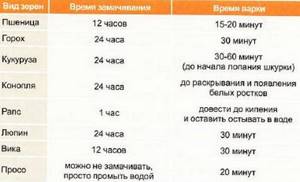
To improve the taste of the grains during the cooking stage, you can add about thirty grams of salt (preferably sea salt) per kilogram of grains, as well as a certain amount of sugar. To speed up the cooking process (which may be relevant when using bottled gas as a heat source), you can use a pressure cooker (in the market, in places where they sell all sorts of old things, you can still find pressure cookers made in the USSR, which are perfectly suitable for this purpose ). Small grains don’t need to be boiled, but simply after washing, place them in a thermos, pour boiling water over them and let sit for a couple of hours. To do this, it is very convenient to use large-capacity metal thermoses, which can be found in the same place as pressure cookers. If you want to add flavor to the grains, it is better to add a booster or other flavoring to them almost immediately after cooking, when they have cooled to a temperature of 50-60°C. In this case, the grains will absorb the flavor much better and then release it into the water for much longer.
Very effective (maybe even the most effective), in my opinion, are methods of processing grains such as germination and fermentation. Both of these processes make it possible, through the use of natural mechanisms, to transform the composition of grains into the most easily digestible and attractive form from the point of view of carp.
Each seed contains enzyme inhibitors (inhibitors are substances that slow down or prevent the course of any chemical reaction, in this case, interfering with the work of enzymes), protecting it from premature germination. It is for this reason that nuts and legumes are “heavy” foods. Heat treatment destroys enzyme inhibitors in the seeds, but vitamins and other valuable substances are destroyed along with them. When exposed to a favorable environment, enzyme inhibitors are destroyed by themselves, allowing the seed to germinate. When any seed germinates, the enzymes (enzymes) it contains break down the proteins, fats and carbohydrates stored for growth. During germination, under the influence of amylolytic enzymes contained in the grain, part of the starch contained in the grain decomposes into simple sugars, and under the influence of proteolytic enzymes, part of the proteins decomposes into amino acids.
Thus, sprouted grains represent partially digested, easy-to-digest food (which is especially important for carp that does not have a stomach). In addition, when seeds germinate, the content of vitamins and other antioxidants increases. In addition, and what is especially important, as a result of enzymatic processes occurring during the germination of grains, the amount of soluble substances contained in them increases significantly. This greatly facilitates the detection of such grains by fish and significantly increases their nutritional attractiveness.
It should be borne in mind that the grains have the best composition at the initial phase of germination, when the sprouts are just hatching. There are many ways to germinate grains. I have already repeatedly and in detail described in my articles how I do this, so I will very briefly dwell on the technology used in this.
The grains need to be thoroughly washed and spread out in a thin layer in some flat container (for example, I use trays for this). Then you need to pour a little water into the container so that it does not completely cover the grains. My know-how is to germinate grains under film; this saves me from the need to control the remainder of the evaporating water and top it up from time to time. I place the trays of grains and regular garbage bags and place them on the windowsill. As soon as the sprouts hatch and a specific smell appears that accompanies the fermentation process, the grains should be thoroughly washed; if they are not used immediately after germination, then either dried or frozen. With the help of germination, you can significantly increase the efficiency of almost any grain. Personally, I mostly sprout wheat.
Read: Successful carp fishing in June, what gear to choose
The fermentation process can also be classified as “cold”, which does not require heating the original product to a high temperature, which allows the beneficial substances contained in the grain to be preserved to the maximum extent. During fermentation, the transformation of the grain composition occurs due to the vital activity of bacteria developing in the vessel with the fermented product. As a result of fermentation, due to an increase in the amount of free amino acids and simple sugars contained in the grain and, as a result, increased availability for absorption by the carp body, the nutritional attractiveness of fermented grains significantly exceeds that of raw or cooked grains.
The simplest method of fermentation is to soak the grains in a large amount of water and then place the container containing them in a warm place (for example, in the sun). To speed up the process, you can add so-called “fast” yeast or brewer’s yeast sold in pharmacies (preferably enriched with methionine and cysteine), as well as molasses - at the rate of about a liter per ten liters of grain. In a few days, excellent bait will be ready. During the fermentation of grains, they should be stirred from time to time and water should be added if necessary.
A more complex, but also more effective way of fermenting grains, which allows you to obtain a high-quality and attractive product, is to perform anaerobic fermentation (those who have seen how wine is made understand what I mean). Anaerobic fermentation is carried out without access to oxygen. This allows for alcoholic fermentation, during which anaerobic bacteria break down the starch contained in the grain into simple sugars and then into alcohol. Probably the best results can be achieved using a sealed container and a water seal, but this involves some labor costs, so, to my shame, I have not tried this method in practice.
However, there is a compromise technology. The grain should be placed in a regular plastic jar and filled with water. Some yeast, sugar or molasses should be added to the water. You need to fill the jar in such a way that there is enough free space for the carbon dioxide produced during alcoholic fermentation, and then screw the lid on tightly. The safety margin of the eggplant will allow it to cope with the resulting pressure. For a kilogram of grain you will need one and a half liters of water, a teaspoon of dry yeast and about fifty grams of molasses. An even more interesting effect can be achieved if you use the EM-A preparation instead of yeast, which was described in detail in the previous article of this series.
Thus, certain types of grains can be prepared in different ways, involving different costs of time and labor.
But I would still recommend using not individual grains, but mixtures of them. A correctly selected and properly prepared grain mixture can significantly extend the time the fish stay in the fishing zone. When forming the composition of the grain mixture, you need to try to make it as difficult as possible for carp to eat, which will keep it in the fishing zone for as long as possible. To do this, the mixture must contain grains of various sizes and shapes. It is much more difficult for carp to absorb food objects of different sizes and shapes than homogeneous ones. As a result, some of the grains will involuntarily fall out of the fish’s mouth, thereby putting it into a state of food excitement, which can lead to a loss of caution and intensive picking up from the bottom of everything that looks like food (including our bait).
Read: What to feed fish in winter?
I would recommend using wheat as the base for the grain mixture. It is small in size and is not so easy to quickly find and eat. The specific chemical composition of wheat is very suitable for carp in many respects; it can be absorbed by fish to a fairly large extent.
We supplement wheat with grains of different shapes and sizes. In addition to making it more difficult for fish to eat such a mixture due to its complex composition, we achieve the greatest possible balance, since individual types of grains will complement each other.
In my opinion, this composition of grain bait is very effective:
• Wheat…………………………10 kg; • Vika…………………………………..1 kg; • Lupine…………………………….1 kg; • Flax seeds………………………1 kg; • Rapeseed seeds…………………….1 kg; • Hemp seeds…………………1 kg; • Millet……………………………..1 kg; • Rye (or triticale)……..1 kg; • Pearl barley………………….1 kg; • Oatmeal………………1.5 kg; • Sesame seed………………0.2 kg; • Poppy grains…………………….0.15 kg; • Anise grains…………………0.15 kg.
To further enrich the grain mixture, you can also add about a kilogram of shelled peanuts and the same amount of shelled sunflower seeds to it.
To prepare bait, you first need to soak the required amount of it (preferably in water from a pond) for ten to twelve hours, and then cook it. To improve the taste of the grain mixture during the cooking stage, you can add about thirty grams of salt (preferably sea salt) per kilogram of grains. The cooking time of the mixture can be controlled by the condition of the cannabis - as soon as most of its grains open, the product is ready. Next, the grain mixture needs to be cooled to a temperature of approximately 50°C, after which a booster with the same smell as the other components of the bait program should be added to it.
It was not for nothing that we introduced oatmeal into the bait. Firstly, they will absorb the smell of the booster well, and then they will also release it well into the water. Secondly, when cooked, oat flakes will create abundant turbidity in the reservoir, effectively attracting fish, which will quickly spread to a considerable distance from the feeding zone, thereby expanding the area of action of the bait.
If fishing takes place in cold water, you can add chili pepper, turmeric, paprika flour, garlic powder and other spices to the bait. Very good results can be achieved by adding various natural plant extracts to the grain mixture, for example, corn liquor or tiger nut extract.
The grain mixture can also be fermented using one of the methods described above (as a rule, this is what I do).
You can feed them either with a pure grain mixture (using a rocket feeder) or by combining it with loose bait in balls.
As I said above, properly cooked grains are so attractive to fish that they may become unresponsive to other types of food. If this happens, try using a kernel or two of fermented corn, raised with floating yellow foam, as bait.
Subscribe to
our channel in Yandex Zen
How to hook wheat
Features of correctly planting wheat on a hook:
- Since boiled grains are very soft, they can very easily be spoiled or crushed if you pick them up incorrectly with your fingers, so you need to be very careful when working with such an attachment.
- For the same reason, you should choose only the highest quality and thinnest hooks. Their sting should be as sharp as possible so that it can easily pierce the hard skin of the grain without damaging the entire nozzle. The most suitable numbers for hooks are No. 8, 14 and 12.
- For baits, you need to select only large grains so that they can “sit” well on the hook. It is desirable that the grains are well steamed or boiled, have small cracks, but are not very limp and porridge-like.
- The number of grains on a hook usually does not exceed three. But as a rule, if the bite is bad, it is better to use just one grain, which will attract more attention from the fish.
- You need to put the wheat grains on the hook a little askew, or from the side, because if you pass the hook through the middle of the grain, it may fall off the hook on the first cast.
- The point of the hook should be left under the skin of the grain, but the shank itself can be left outside.
- Before casting, you need to make sure that the bait is holding well. If you are unsure of this, then it is better to replace the nozzle and reattach it to the hook, because otherwise it simply will not bring any bite.
Other healthy grains
In addition to wheat, it is recommended to include millet, pearl barley and rapeseed in the chicken diet.
It is recommended to include grains in the diet
Millet
Young breeders are interested in whether it is possible to feed millet to chickens? Millet is considered a very healthy cereal. It contains vitamins such as B1, B2, B5, PP, as well as phosphorus, magnesium, iron and other useful components.
It is a leader among grains that are used to feed poultry. It is even recommended to introduce boiled millet into the diet of chicks. The grain is pre-soaked in hot milk and then mixed with a boiled egg. A millet diet in adult chickens increases their egg production rate. If you introduce millet and millet into the diet of chickens, the shells on the eggs will be strong, and the laying hen will feel strong and healthy.
Important! In large factories, millet cereals are not cleaned, but given in their natural form.
Pearl barley
As for pearl barley, it is essential for chickens. It contains a large number of amino acids, as well as lysine, which prevent feather loss in birds. To feed chickens, it is recommended to use the most common pearl barley that has undergone preliminary preparation. In this case, the upper hard skin is removed from the grain. Since chickens do not chew their food, it is this type of grain that will be quickly digested in their stomach.
Barley can be given in crushed form, or it can be steamed like wheat. You need to know not only how to give pearl barley to chickens, it is important to have information on how much grain to give. Pearl barley should not exceed 20% of the bird's daily diet. Otherwise, disruption of the functioning of the gastrointestinal tract of birds cannot be avoided.
We should not forget about such a valuable and useful crop for birds as rapeseed. This plant contains many vitamins and microelements necessary for the normal growth and development of birds. It is also important that it contains only 1% fat. This prevents the development of obesity in chickens. Raw rapeseed is used to produce cake, flour and meal. All this can be used as poultry feed.
Important! Under no circumstances should rapeseed derivatives be poured with cold or hot water. In feed it is used only in dry and raw form.
Almost all grain crops are suitable for feeding chickens. Each of them differs in its composition and beneficial properties. You should not choose just one, as monotony can harm the birds. A varied and balanced diet is the key to the health of poultry, as well as a high level of egg production.
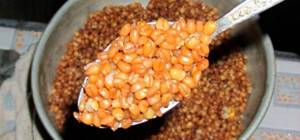
You can lure fish with various types of bait, including expensive store-bought and affordable ones, and cheap ones prepared at home. This type of bait includes steamed wheat for fishing.
Many anglers claim that this is the best bait for fish such as bream and roach. Despite this, you can also catch other types of peaceful fish with it.
Most fishermen try to catch big fish, and steamed wheat gives such a chance.
The steaming process is not at all complicated and the main thing here is to ensure that the wheat is soft and, at the same time, firmly held on the hook.
Wheat fishing
Wheat can be used for fishing in two ways:
- as a nozzle;
- as complementary food.
Features of using wheat as bait:
- It is advisable to do the first bait the night before fishing. To do this, you need to throw a fairly large amount of ready-made bait mixture (about seven to ten kilograms) into the area of the reservoir in which you want to fish in the future.
- After this, on the day of catching, you need to throw the next portion of complementary food into the same place, but in smaller quantities, so that the fish remains a little hungry and reacts well to the bait.
- During the fishing process, you can also add complementary foods, but not more often than every hour. Portions of porridge or dough should be very modest so that the fish does not get full, but at the same time does not swim far from the desired place.
- If the distance for throwing bait is small, then you can throw it by hand, but if the distance is quite long, then you can use a special slingshot or a regular casting spinning rod, on the hook of which small bags of bait are tied.
- Even if the bite is intense, you should not forget about complementary feeding, since the frequency of fish biting largely depends on it.
Features of using wheat as a bait:
- The first step is to place the wheat grains correctly on the hook.
- Then you should cast the already planted wheat into the area of the reservoir that was previously fed.
- Usually, the bite on wheat is very sharp, because the fish swallows it whole, so when biting, the float goes completely into the water, after which the fisherman must react as quickly as possible. So as not to lose your catch.
- If the bite is not observed for quite a long time, then it is worth re-throwing the tackle to another place.
- The bait should be changed every fifteen minutes, regardless of whether it bites or not, in order to each time renew the smell of wheat, which quickly dissolves in the water.
Selection of wheat for bait and bait
Not only the method of cooking porridge is important, but also the choice of product. There are a number of requirements:
- the grains must not be damaged by larvae, diseases or rodents;
- It is best to buy products in places where you can find out that the product has not been treated with chemicals;
- purchase only whole grain cereals;
- pay attention to the aroma of wheat, as it should be free of foreign odors.
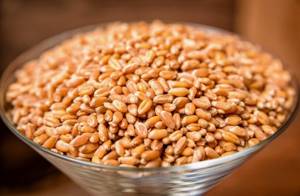
Blitz tips
- Wheat must be added to the bait carefully so that the fish does not get enough of it, because then it will lose interest in the bait and stop biting.
- It is very important to add salt to the wheat so that it enhances the natural flavor of the porridge. You need to sprinkle it as much as you would salt yourself, but no more.
- You can add flavorings to boiled or steamed wheat, but only in moderation, since a too rich aroma will scare away the fish.
- When preparing bait with steamed cake at the same time, it is advisable to cook the wheat in such an amount of water that there is still some water left for steaming the cake.
- If the bite is really bad, then you need to crush each grain of wheat in your hands so that it softens a little. In addition, you can even remove the top layer of grains a little so that they look like wings. The fish will begin to bite more intensely on such a bait.
- When cooking wheat, it is better to slightly overcook it rather than undercook it, since fish bite better on well-cooked soft grains.
